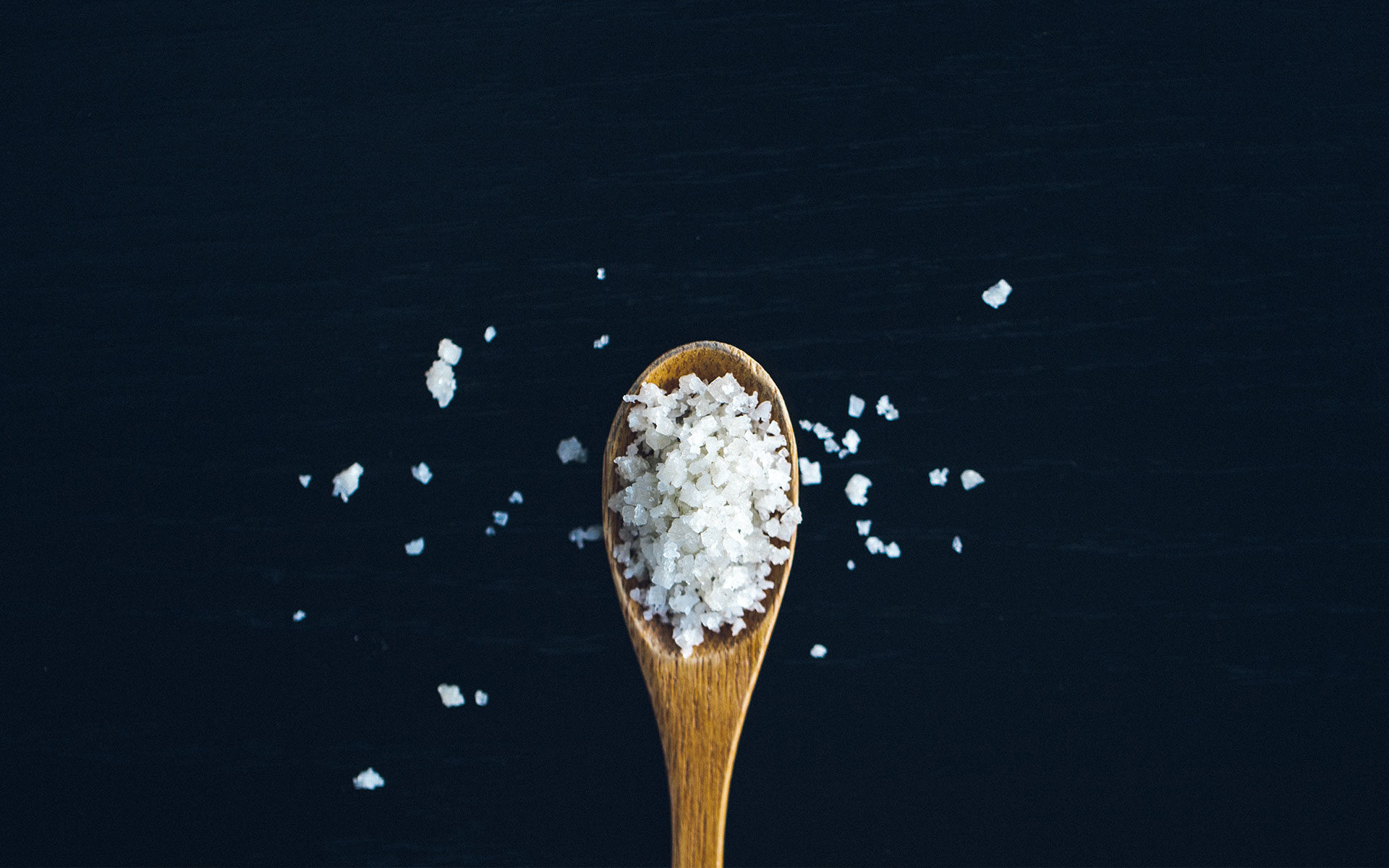We spend a lot of time at the office combing through your feedback and using it to shape our next moves. Many of you often ask about salt, concerned about your own intake & wondering if sodium alone is really the threat it’s made out to be. Today, we’re covering all the bases.
If you find yourself asking, “Wait, what is the deal with salt? Is it a benign way to add flavor to food, or is there something scarier lurking in my salt shaker?” Today we’re here to quiet the nutrition noise and give you the scoop on what sodium is and how it relates to common health issues.
The basics of sodium
Let’s start with the basics of sodium. This mineral, which you might remember as “Na” from the periodic table of elements, does some pretty important stuff in your body. In conjunction with potassium, it regulates the amount of water in the body and is critical for the proper functioning of the brain, nervous system, and muscles. The salt you eat is a combination of sodium & chloride or NaCl. Since sodium works together with potassium & other electrolytes & minerals, your intake of those nutrients is just as important as your salt intake.
What the experts think about sodium intake
Most of today’s dietary guidelines advise us to consume 2,300 mg of sodium per day or less. For some context, that’s equivalent to the amount of sodium in 1 teaspoon of salt. The American Heart Association recommends even less– 1,500 mg for anyone who’s not losing lots of salt via sweat. These conservative recommendations are based on the long-held idea that increased sodium intake → fluid retention → increased blood pressure → cardiovascular disease (CVD). In theory, this makes sense.
However, a closer look at existing data paired with emerging research reveals a more complex relationship between sodium intake and heart health.
In addition to individual physiology, physical activity levels (read: sweat), and inherent salt sensitivity, what you eat also matters.
Sodium is mostly found in these 6 foods
A diet full of fruits & veggies (and, therefore, electrolytes & minerals that work hand-in-hand with sodium) and other cardioprotective foods will confer far more benefits than a diet full of processed foods, even if the two diets share equal caloric and sodium content.
For example, a Japanese study has shown that a traditional diet high in fish, vegetables, and sodium is associated with a lower risk of CVD. The aforementioned individual & lifestyle factors lead to inconsistent data and conflicting conclusions & recommendations. Emerging research seems to show a more “J-shaped relationship between sodium and cardiovascular disease,” meaning that those at the low (less than 3,000mg/day) & high (over 5,000mg/day) ends of the spectrum of sodium intake are at increased risk for CVD. Fortunately, many of us sit at the bottom of this risk curve, at a moderate intake of 4-5,000mg per day.
But regardless, the top six foods containing sodium are:
- breads
- pizza
- cured meats
- soup
- poultry
- sandwiches
The takeaway
Rather than getting too caught up in the numbers, generally healthy individuals should think about their overall eating habits & lifestyle. The interplay between sodium, potassium & other minerals & electrolytes is far more important than sodium alone. Physical activity and low carb diets have also been researched as effective in managing high blood pressure.
When it comes to sodium (and health as a whole) your best bet is eating plenty of real, whole foods including ample veggies. For the most part, real foods will be naturally low in sodium, allowing you room to sprinkle some sea salt on for flavor. If you’re especially physically active (again, read: sweaty) or you’re following a ketogenic diet, you may need to take your sodium intake up a notch or two. If you’re salt-sensitive or at risk for CVD, work with your doctor to find the level of sodium that works for you. All in all, trust your adaptive, smart body to do its work, and listen when it tells you what it needs.
Here at Snap, we use sea salt (filled with beneficial trace minerals) & spices to flavor our food and always build our meals with veggies in mind. If you’re into real, whole foods to fuel you while you’re on the go, we’ve got you covered with our meal plans.
Sources:
https://www.ncbi.nlm.nih.gov/pubmed/16467498
https://www.bmj.com/content/346/bmj.f1325.short
https://www.medicalnewstoday.com/articles/317099.php#post
https://www.mindbodygreen.com/articles/why-you-need-salt-to-get-in-shape





Leave a Reply
2 Comments
Would like to subscribe!
Thanks for this informative blog post.